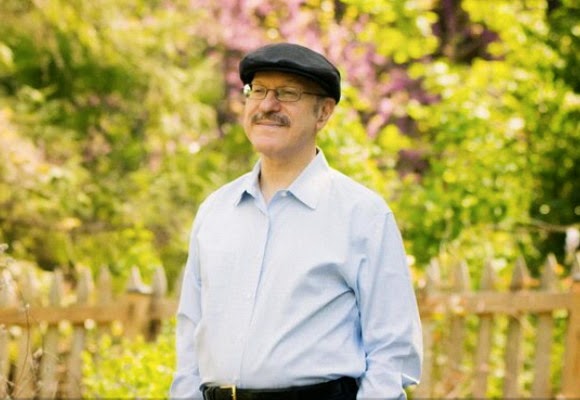Curious about who the most popular psychiatrists are, I searched Twitter for individuals (not organizations) with profiles matching "psychiatrist" on 4/26/15. I examined the first 100 or so profiles written in English, looking at the follower count and selecting the 4 psychiatrists with the most followers for further scrutiny (and speculation), focusing on the nature of their popularity and just how much B.S. they espouse. Here's what I found:
#4: Judith Orloff (40.0K followers | following 10.3K)
Claim to fame: According to her Twitter profile, Dr. Orloff is a "psychiatrist, intuitive healer, and author of THE ECSTASY OF SURRENDER about how to let go of stress, trust intuition, and embrace joy." She has also written other books with titles such as [her CAPS]: EMOTIONAL FREEDOM, POSITIVE ENERGY, INTUITIVE HEALING, and SECOND SIGHT. I have never heard of her or any of her books; judging by their descriptions, they are very much targeted toward a non-scientifically-minded audience (which is to say, just about everyone).B.S. meter: 7
#3: Daniel Amen (78.7K followers | following 29.3K)
Claim to fame: Frankly, I was surprised that he was not #1. He's the only psychiatrist that I immediately recognized out of the 4 I found doing this search and the only one with a verified Twitter account, which Twitter only bestows upon "key individual and brands." Dr. Amen is the founder of Amen Clinics, which uses SPECT brain scans to purportedly diagnose mental disorders. He has been featured in programs running on PBS, and he even has influence amongst Christian audiences. In 2012, a Washington Post article called him "the most popular psychiatrist in America."B.S. meter: 8
#2: Brian Weiss (80.7K followers | following 25)
Claim to fame: Dr. Weiss's website tells us he "was astonished and skeptical when one of his patients began recalling past-life traumas that seemed to hold the key to her recurring nightmares and anxiety attacks. His skepticism was eroded, however, when she began to channel messages from 'the space between lives,' which contained remarkable revelations about Dr. Weiss's family and his dead son. Using past-life therapy, he was able to cure the patient and embark on a new, more meaningful phase of his own career." He is the author of books such as Miracles Happen: The Transformational Healing Power of Past Life Memories, and Many Lives, Many Masters: The True Story of a Prominent Psychiatrist, His Young Patient, and the Past-Life Therapy That Changed Both Their Lives. Not surprisingly, his homepage prominently features a photo of him and Oprah. He runs 5-day workshops costing $1000/person for "anyone interested in exploring these profound psychospiritual techniques."B.S. meter: 10+
Thus far, the trend seems to be greater popularity correlating with ever escalating levels of B.S. I was losing what little faith I had entering this exercise. So I was shocked by who ranked first:

For a moment, I thought I was looking at Dr. Tobias Fünke from Arrested Development. But no, it's actually this guy:

#1: Norman Rosenthal (101K followers | following 28.3K)
Claim to fame: I have never heard of Dr. Rosenthal before, but he is the only psychiatrist I can find with over 100K followers. According to his website, he "has written over 200 scholarly articles, and authored or co-authored eight popular books. These include Winter Blues, the New York Times bestseller Transcendence, and the Los Angeles Times bestseller The Gift of Adversity. Rosenthal has conducted numerous clinical trials of medications and alternative treatments, such as Transcendental Meditation for psychiatric disorders, and the treatment of depression with Botox." Watching him on Youtube, it seemed that his South African accent instantly gave him added authority and gravitas (I call this the Salvador Minuchin effect).B.S. meter: 1
So what did I learn about psychiatrists and fame, at least when it comes to Twitter? Obviously, it helps to write multiple best-selling books and to regularly appear on television. Presenting oneself as an "alternative" practitioner with special knowledge or healing techniques helps as well. I won't delve into the content of their tweets in this post, but it seems relentlessly positive messages and pithy tips on how to improve one's life are a must in order to reach as broad an audience as possible.
Also, 3 of the 4 psychiatrists employ the method of following tens of thousands of people in hopes of trying to get as many people to follow them back as possible. In contrast, the truly famous doctors tend have much more sane follow counts: Dr. Oz follows 85, Dr. Pinsky follows 422, and Dr. Gupta follows 198. Thus, Dr. Weiss may well have the most impressive follower count amongst psychiatrists, given that he only follows 25 people for a follower:following ratio of 3228!
Before doing this search, I did not follow any of these top 4 psychiatrists on Twitter. Of the accounts that I follow, 8 of them follow Dr. Amen, 4 follow Dr. Orloff, 4 follow Dr. Rosenthal, and only 1 follows Dr. Weiss (really, @AACAP?). While writing this post, I've decided to follow Norman Rosenthal. He's the one out of the 4 who seems to have most preserved his professional integrity without wading deeply into the realm of pseudoscience, pop spirituality, or utter nonsense. I think every psychiatrist (or doctor, for that matter) aspiring to semi-celebrity status can learn something from him ;-)